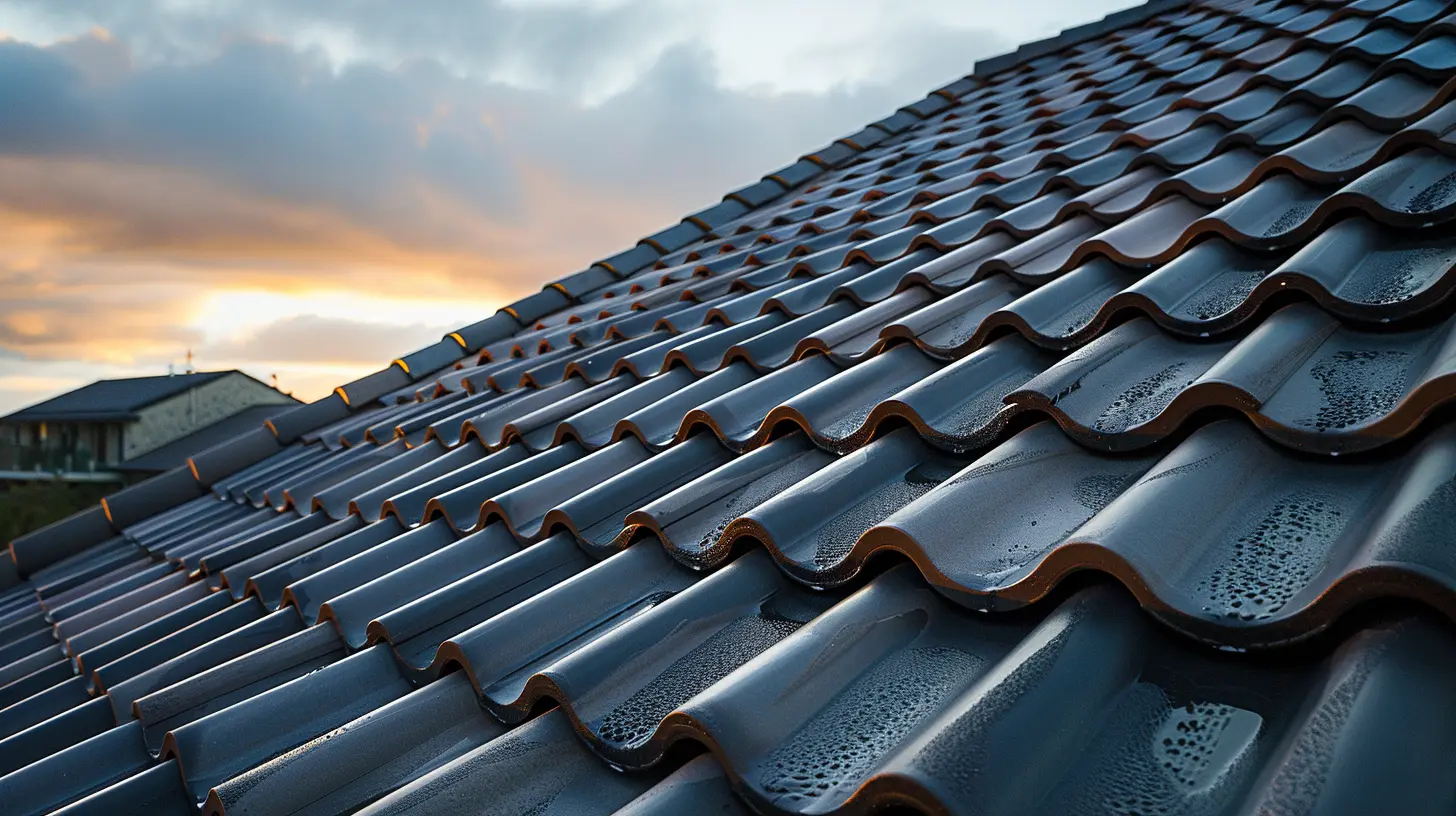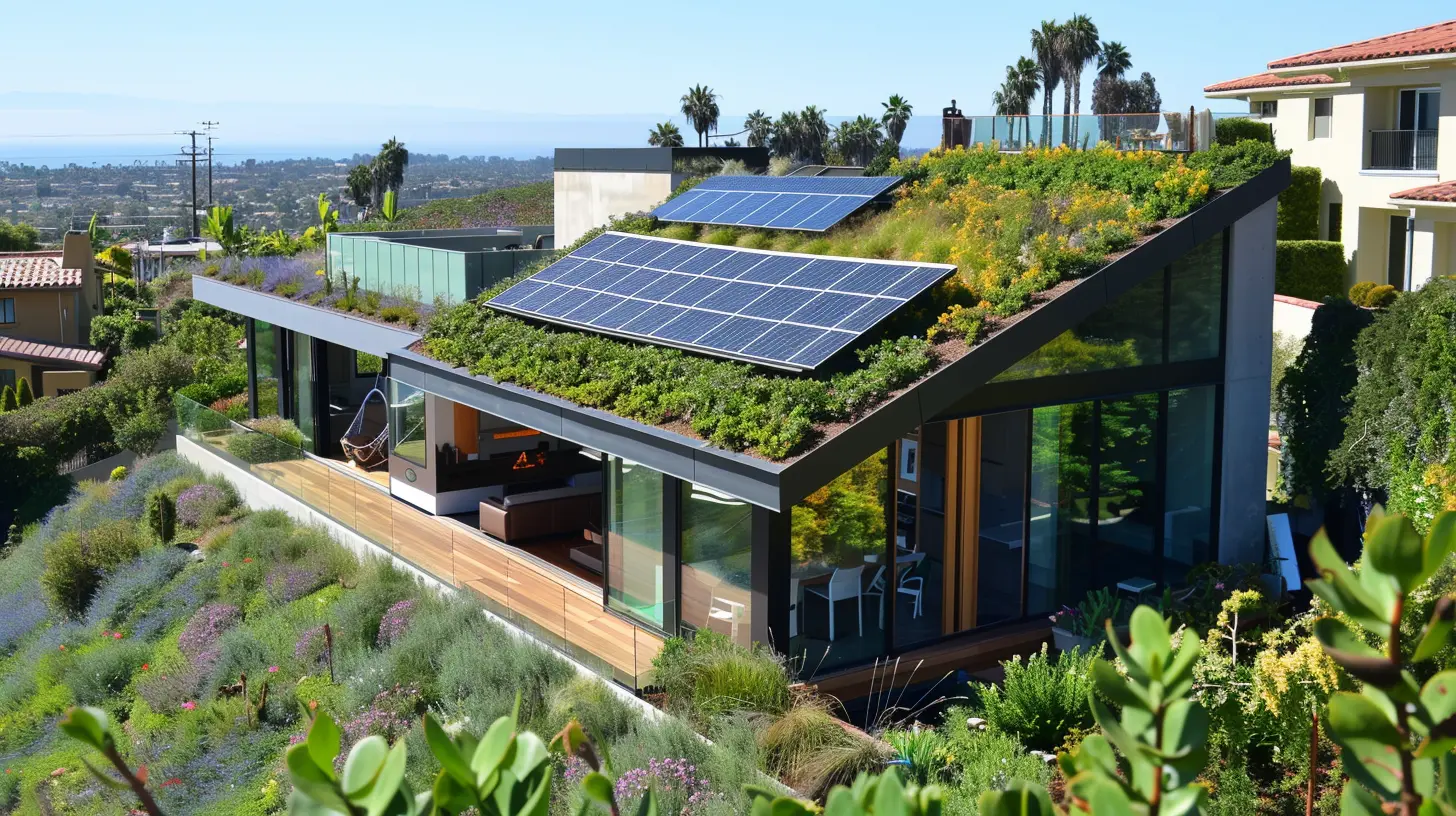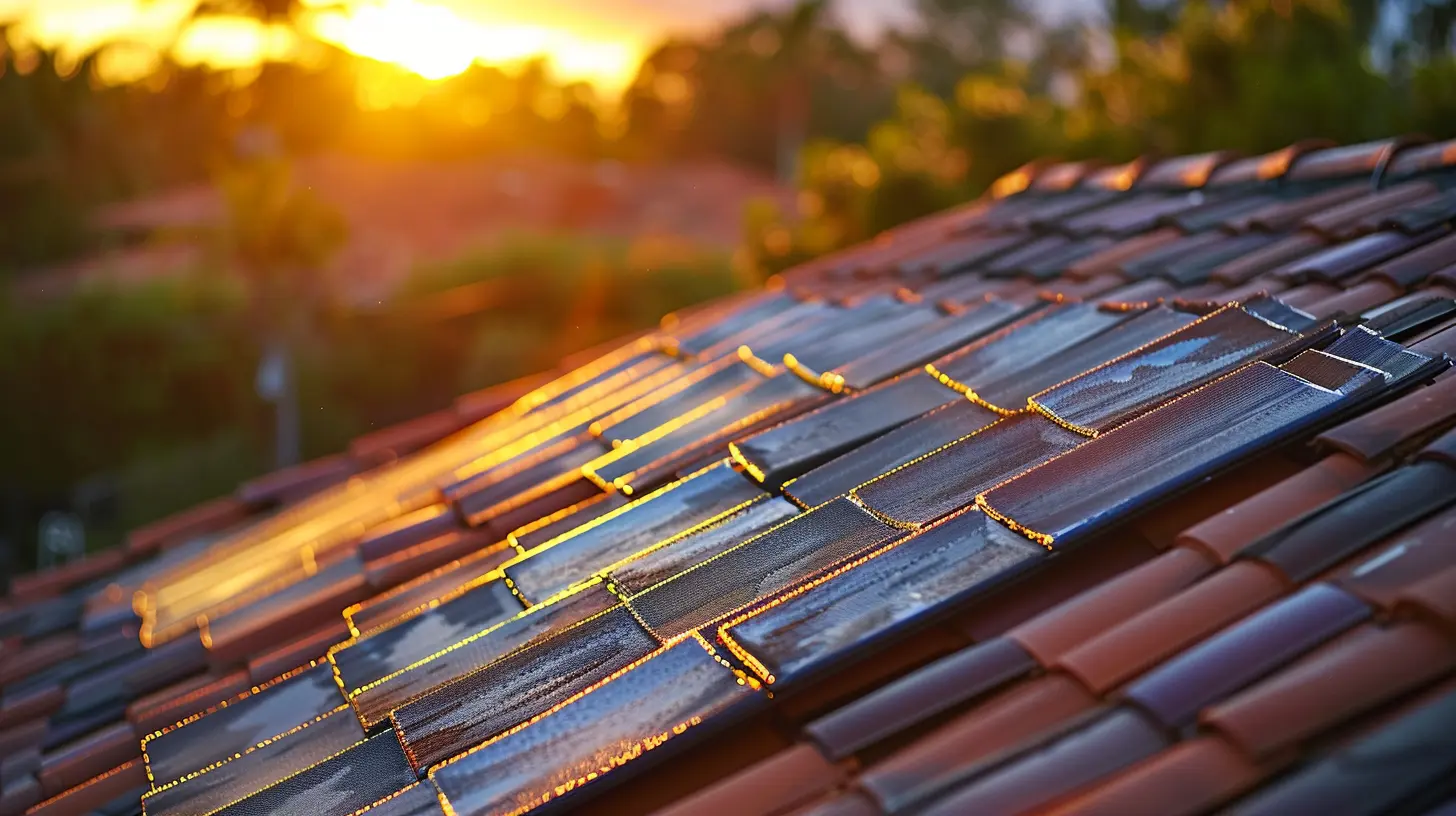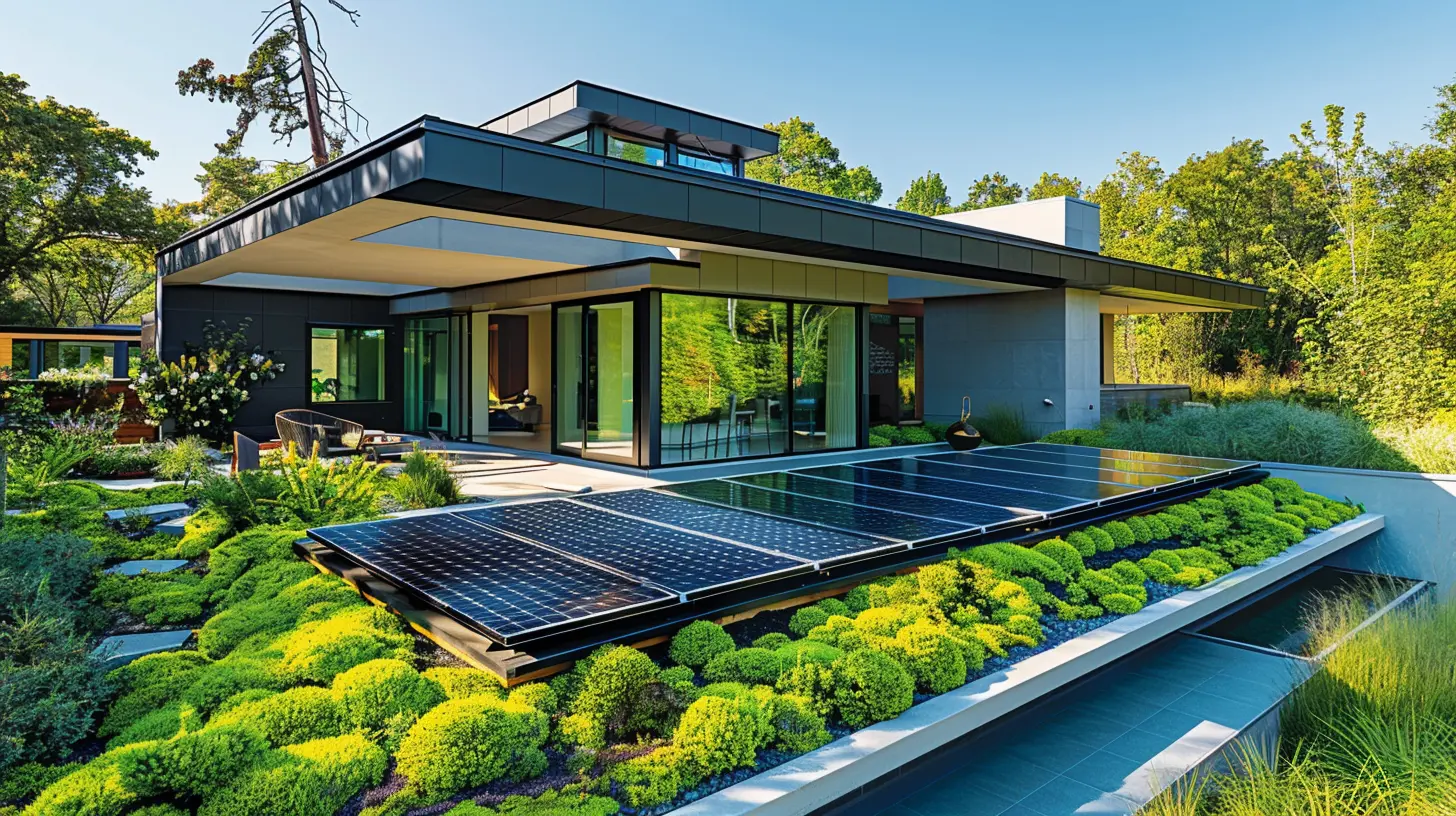The Evolution of Solar Roof Tiles: A Game-Changer for Green Homes
20 October 2025
Solar energy isn't just about big panels on rooftops anymore. It's getting smarter, sleeker, and way more efficient. Enter: solar roof tiles. These aren’t your grandpa's chunky solar panels. We're talking about energy-generating roof tiles that not only power your home but also look downright stylish doing it.
So, how did we go from clunky setups to fully integrated solar roofing? Grab a coffee or a glass of iced tea, and let’s walk through the journey — and why this tech might just be the future of sustainable living.
The Humble Beginnings of Solar Technology
Before we had high-tech solar roof tiles, solar power started with basic panels — simple, flat devices that absorbed sunlight and converted it into electricity. You’ve seen them everywhere: on rooftops, street lamps, calculators, even satellites.These panels were effective, but they had their downsides. They were bulky, didn’t always vibe with modern home designs, and installation wasn’t exactly a walk in the park. People cared about going green, but many hesitated to sacrifice curb appeal for solar savings.
So the question became: how do we make solar power invisible yet powerful?
The Birth of Solar Roof Tiles
Then came the spark — what if solar panels were the roof?Back in the early 2000s, engineers and visionaries began experimenting with building-integrated photovoltaics (BIPV). The idea was to embed solar tech directly into the materials we already use to build homes. No extra layers. No awkward add-ons. Just clean energy built right into the bones of your house.
Solar roof tiles were born out of this concept. They’re designed to look and function just like regular roofing materials — whether it's asphalt shingles, slate, or clay tiles — but with the added bonus of generating electricity.
Amazing, right?
What Makes Solar Roof Tiles So Special?
Let’s break it down. While traditional solar panels sit on top of your roof, solar roof tiles are your roof. That means:- Aesthetics: They seamlessly blend in and maintain the architectural beauty of your home.
- Durability: Built to withstand harsh weather — think hail, heavy rain, and high winds.
- Efficiency: Today’s models are surprisingly effective and keep getting better.
- Property Value Boost: Eco-friendly upgrades are more attractive to buyers than ever.
It’s like getting a two-for-one deal: a durable roof and free electricity.
Tech Meets Style: How Design Has Evolved
In the early days, solar roof tiles were a bit underwhelming. They were expensive, less efficient than panels, and limited in design. Some even looked... well... let’s just say they were more “Frankenstein” than “fabulous.”But thanks to companies like Tesla, SunTegra, and Luma Solar, we’ve seen a major glow-up in the last decade.
Modern solar tiles come in sleek designs that mimic the look of conventional roofing materials. Some options are nearly indistinguishable from classic shingles. And the best part? They can last for decades and still crank out the watts.
It’s like the iPhone of roofing — high-tech wrapped in a beautiful shell.
Real-World Impact: Why Homeowners Are Making the Switch
Here’s where things get real. More and more homeowners are choosing solar roof tiles because it just makes sense.1. Lower Bills – Who wouldn't love to slash those power bills? Solar roof tiles can dramatically cut monthly electric costs.
2. Energy Independence – Tired of utility rate hikes? Generate your own power.
3. Eco-Friendly Living – Reduce your carbon footprint and be part of the climate solution.
4. Tax Incentives – Big-time rebates and incentives help ease the upfront cost.
5. Modern Appeal – A solar roof just looks high-end. It’s a conversation starter, too.
With energy prices going up and climate change becoming harder to ignore, solar roofing feels less like a luxury and more like a smart investment.
Obstacles and Misconceptions Along the Way
Now, let’s not pretend it was all sunshine and rainbows. Solar roof tiles had their growing pains.Cost was a huge hurdle at first. Early models were pricey — you could easily spend more than a traditional roof and panels combined. Plus, installation was tricky, requiring specially trained crews.
People also worried about efficiency. Could something so sleek really compete with those big ol’ panels?
Fast forward to today, and those concerns are quickly melting under the sun (pun intended). Prices have dropped, efficiency has climbed, and more installers are getting up to speed with the tech.
The Green Revolution at Home
Let’s zoom out for a second. Solar roof tiles are more than a cool gadget. They’re a symbol of something bigger — a shift in how we think about our homes, our energy, and our planet.We're entering a new era where homes aren't just places we live — they're little power plants, generating clean energy every single day. And with the rise of smart home technology, electric vehicles, and better batteries, it’s a perfect storm for change.
For eco-conscious homeowners, solar roofing isn’t just a trend. It’s a lifestyle choice. A statement. A way of saying, “I care about what kind of world I’m leaving behind.”
Comparing Solar Roof Tiles vs Traditional Solar Panels
Just to clear up any confusion, let’s do a quick side-by-side:| Feature | Solar Roof Tiles | Traditional Solar Panels |
|------------------------|----------------------------------|-----------------------------------|
| Appearance | Sleek, built-in look | Bulky, mounted on top |
| Installation Time | Longer (integrated with roofing) | Faster (can be retrofitted) |
| Durability | High (dual function) | High, but adds weight to roof |
| Efficiency | Slightly lower per tile | Generally more efficient per panel|
| Cost | Higher upfront cost | Lower initial investment |
| Aesthetic Appeal | High | Moderate |
Both options are great. It really comes down to your priorities: want the most efficient system for the buck? Go panels. Want your home to look like something from the future? Tiles, baby.
What's Coming Next in Solar Roofing?
Hold onto your hats — the evolution doesn’t stop here.We’re seeing exciting developments in:
- Smart Tiles that communicate with your home automation systems.
- Higher Efficiency Materials like perovskite and transparent tech.
- Energy Storage Integration so your power lasts long after the sun goes down.
- Modular Designs making repairs and upgrades easier than ever.
Imagine a roof that not only powers your fridge and lights but also charges your EV and talks to your smart thermostat. Yeah, it’s that futuristic.
Is It Time to Make the Switch?
If you’re building a new home or replacing an old roof, solar roof tiles are definitely worth a look. They blend the latest in clean energy with timeless style and save you money in the long run.Sure, the upfront investment may be a bit higher than standard options. But think about what you’re getting in return: energy savings, higher home value, tax benefits, and a big ol’ green thumbs-up from Mother Nature.
So ask yourself: is it time your roof started pulling its weight?
Final Thoughts: Why Solar Roof Tiles Are A Game-Changer
Solar roof tiles are more than just a flashy new gadget. They represent a major leap forward in how we think about sustainable living. They’re helping everyday people take control of their energy, reduce their impact on the planet, and do it all without compromising on style.The journey from early solar experiments to sleek, integrated rooftops hasn’t been easy — but the payoff is clear. We’re on the brink of a rooftop revolution, and it’s powered by the sun.
If you’re dreaming of a home that’s not just smart but also sustainable, solar roof tiles are a game-changer you can’t afford to ignore.
all images in this post were generated using AI tools
Category:
Green TechnologyAuthor:

Michael Robinson
Discussion
rate this article
1 comments
Andrea McAdoo
Wow, solar roof tiles! Because who doesn’t dream of turning their roof into a mini power plant? Forget about standard roofs being a dull necessity; now you can have a trendy energy generator that also doubles as a conversation starter at dinner parties!
October 21, 2025 at 3:38 AM

Michael Robinson
Absolutely! Solar roof tiles are not only functional but also stylish, transforming homes into innovative energy hubs while sparking fascinating conversations.


